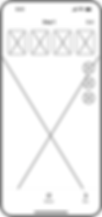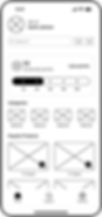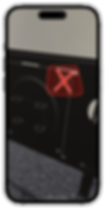ASSEMBLEIFY
Case Study


Project Overview
This case study presents an Augmented Reality (AR) application designed to assist users in assembling new products by displaying different pieces and step-by-step instructions in AR.
Problem
Numerous people face considerable difficulties and irritations while trying to assemble complex products like furniture, appliances, or electronics, often because the instructions provided are not easy to understand.

01
Having to guess and try different ways to assemble because the instructions are so complicated, causing dissatisfaction.
02
Confusing paper manuals with tiny text and diagrams which are hard to make sense of.
03
Relying solely on words and flat pictures, which don't give a clear idea of how to put things together.
04
Getting lost in the assembly steps, leading to mistakes, wasted time, and feeling unhappy with the product.
Initial Idea
This project aims to transform the furniture assembly experience using augmented reality (AR) technology. Inspired by the challenges faced by "IKEA" customers, we have developed an immersive AR application that:
-
Eliminates the need for cumbersome paper manuals by providing virtual, step-by-step assembly instructions
-
Allows users to preview the assembled product before making a purchase, bridging the gap between online shopping and hassle-free assembly
-
Empowers users with AR-guided assembly, reducing the likelihood of errors and frustration
-
Offers a seamless, user-friendly experience to make furniture assembly an enjoyable process
By harnessing the power of AR, our team is redefining the way people interact with their furniture and embracing the future of home improvement.
Process
This project was a collaborative effort and my roles included sketching ideas, UI design, prototyping, and video design. The project duration was 12 weeks from June to September 2023. Tools like Figma, Adobe Photoshop, Adobe Aero and Adobe Premier Prowere utilized to design a user-friendly app were used to create this application.
Interview
We conducted interviews with participants to gather insights on their experiences and challenges during assembly. Below are some of the questions we asked and the answers we received.
-
The user hasn't used AR technology for assembly, presenting an opportunity to introduce AR solutions.
-
When facing assembly issues, the user turns to YouTube videos and customer support, indicating that manuals are often insufficient.
-
The user prefers video guides over written manuals, suggesting that visual aids are more effective for understanding assembly.
-
Products with many small or varied parts are particularly challenging for the user, pointing to a need for clearer, possibly interactive guidance.
-
Phone support is found less helpful, highlighting the need for better support channels.
Competitive Analysis
IKEA's 3D application serves as a primary competitor. It provides interior design products, offers users the ability to explore true-to-scale 3D models of various furnishings, including sofas, armchairs, footstools, and coffee tables, before making a purchase.

Positive
-
Text style onboarding
-
3D images are quite accurate convey the real-life sizes
-
Limited functionality makes it easier to use
Negative
-
Does not offer product assembling
-
No option to measure the user’s space
-
App limited to IKEA products
Persona

Solution
This project is dedicated to developing an AR-based solution that improves the user experience, minimizes assembly errors, and enables users to put together products easily and confidently.

Why Augmented Reality (AR)?
Augmented Reality (AR) is increasingly important and widely used in various projects and industries these days.
-
Provides users with immersive and interactive experiences
-
AR can recreate real-life situations in a virtual environment.
-
Handheld devices have attracted increasing attention in recent years.
-
Users can gain practical knowledge through simulations without any actual risks or expenses.
-
This technology can assist in making decisions, reviewing designs, and finding solutions to problems.
Why Mobile phone was chosen?
Augmented reality (AR) was chosen to be used on smartphones for our mobile app for several key reasons. Smartphones are portable, allowing users to enjoy AR experiences on the go. They are equipped with essential sensors like accelerometers, gyroscopes, GPS, and cameras, which enable precise real-time tracking and interaction with AR. Additionally, the built-in cameras make AR interactions more immersive and intuitive, capturing the user's immediate surroundings effectively. Plus, the ease of downloading AR apps directly to phones makes smartphones a highly accessible platform for AR adoption.
Information Architecture

User Flow



High Level Architecture (HLA)


Low-Fidelity




High-Fidelity













Visual and Haptic Feedback
Assembleify uses haptic feedback to alert users immediately when there is a problem during assembly. It allows them to feel the error physically. This quick, tactile response enhances the interactive experience. The app also provides visual feedback through clear red indicators on the user's mobile screen to signal any assembly issues. These simple, user-friendly cues help users quickly identify and solve problems.


Voice Command
Voice commands have been integrated into the design through the use of a microphone sensor. It allows users to interact with the app through speech recognition. This feature is particularly useful during assembly, as it allows users to operate the app hands-free, facilitating seamless interaction while they are assembling the product.



Different kinds of background
Users have the ability to personalise the background to suit their preferences by selecting from three different options.
1- The original, genuine backdrop.
2- A blurred background
3- A blue-coloured overlay



